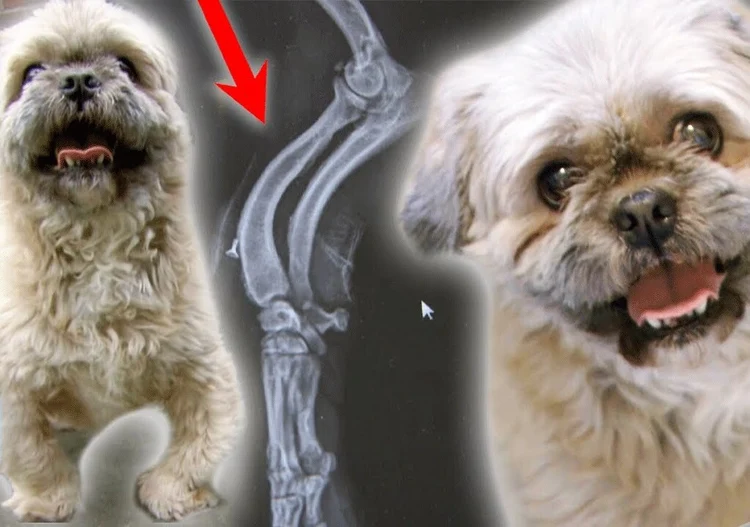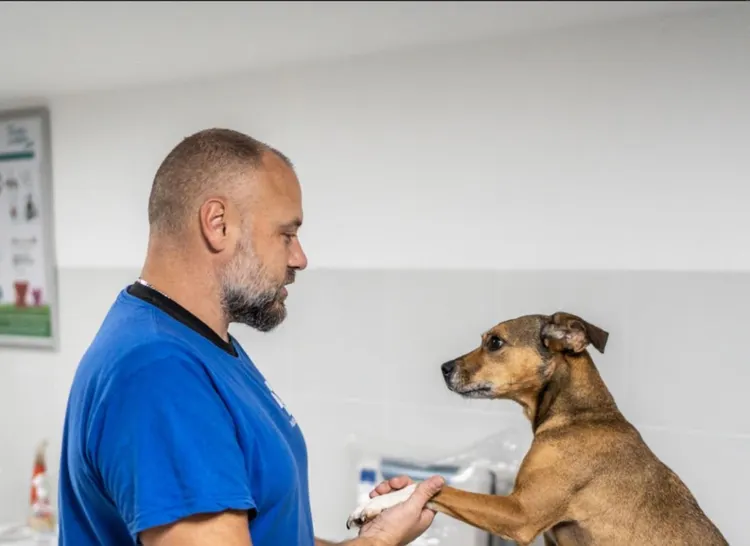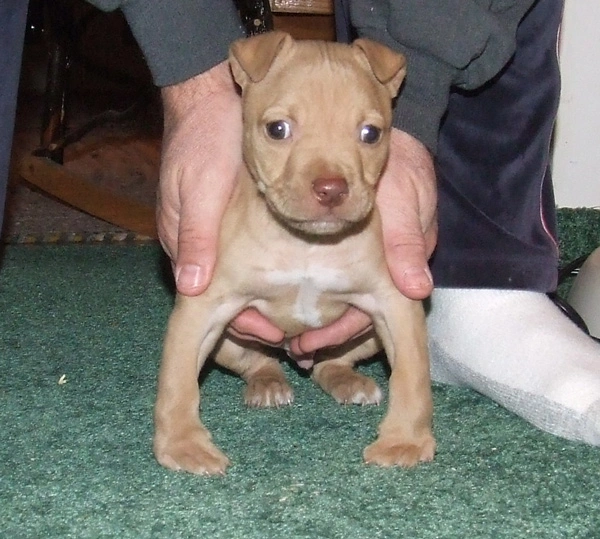Does your dog walk with a distinctive bow-legged stance? While it might look endearing, a bow-legged posture can signal underlying health issues. Understanding the causes, signs, and treatment options for bow legs in dogs can help you ensure your pet’s well-being. In this guide, we’ll explore why some dogs develop bowed legs, how to spot the condition early, and eco-conscious ways to support your dog’s joint health.
What Does It Mean When a Dog is Bow-Legged?
Bow-leggedness in dogs refers to a condition where the legs bend outward in a bow shape, often making the stance and gait appear slightly unusual. The curvature can occur in the front legs (forelimbs) or hind legs (hindlimbs), depending on the underlying cause. While bow-leggedness may be seen in some breeds as a natural characteristic, it’s important to differentiate between harmless conformational traits and issues that may affect the dog’s mobility or quality of life.
Common Breeds Prone to Bow Legs
Certain breeds are more likely to exhibit a bow-legged stance due to their genetic makeup or body structure. Some of the most commonly affected breeds include:
- Dachshunds: Known for their long bodies and short legs, Dachshunds are prone to joint issues and bone deformities.
- Bulldogs: With their stocky, muscular build, Bulldogs often have bowed front legs as part of their natural stance.
- Corgis: Similar to Dachshunds, Corgis have short legs, which may cause bow-leggedness, especially as they age.
While bow-leggedness may be part of the breed’s appearance, it’s crucial to monitor your dog’s mobility and ensure that this characteristic doesn’t contribute to discomfort or long-term health issues.
Causes of Bow Legs in Dogs
Several factors can contribute to the development of bow-leggedness in dogs. While genetics play a significant role in certain breeds, other causes may stem from injury, nutrition, or developmental conditions.
1. Genetic Conditions
Some breeds inherit bow-leggedness due to chondrodysplasia, a condition that affects the growth of cartilage, leading to abnormal bone development. Chondrodysplasia can cause a variety of leg deformities, including outward curvature. This is common in breeds with naturally short legs, such as Basset Hounds and Shih Tzus.
2. Poor Nutrition
Proper nutrition during a dog’s growth phase is essential for healthy bone development. Puppies who lack key nutrients—especially calcium, phosphorus, and vitamin D—are at risk of developing bone deformities, including bow legs. Malnutrition or imbalanced diets can also lead to conditions like rickets, which weakens the bones and causes them to bend.
3. Injuries or Trauma
Accidents or untreated fractures during a dog’s formative months can lead to improperly healed bones, resulting in a bow-legged appearance. Traumatic injuries to the legs or joints can affect the bone structure, causing misalignment if not addressed promptly.
4. Developmental Disorders
Developmental conditions such as rickets or elbow dysplasia can interfere with normal bone growth, causing the legs to bow. Elbow dysplasia is particularly common in large breeds like Labrador Retrievers and German Shepherds, where the joints develop abnormally, leading to bone deformities and bowing in the front legs.
How to Spot Bow Legs in Dogs
Early detection is key to preventing potential mobility issues. Understanding the signs of bow-leggedness can help you take action before the condition worsens.

Signs of Bow Legs in Dogs
- Outward Bending: The most noticeable symptom is an outward curvature of the legs, which becomes more apparent when the dog is standing or walking.
- Stiffness or Limping: Dogs with bow legs may show signs of stiffness, especially after exercise, or they may develop a limp.
- Reluctance to Jump or Play: If your dog avoids jumping, running, or engaging in playful activities, it may be due to discomfort in their legs.
- Visible Discomfort: You may notice your dog licking or biting their joints, indicating soreness or discomfort around the affected areas.
When to See a Vet
If your dog’s bow-legged stance seems to cause pain, stiffness, or reluctance to move, it’s time to consult a veterinarian. A vet can assess the severity of the bowing and recommend appropriate treatments, whether through physical therapy, dietary changes, or surgical intervention.
Treatment Options for Bow Legs
Depending on the cause and severity of the bow-legged condition, there are several treatment options available. Addressing the problem early can help prevent further complications and improve your dog’s quality of life.
1. Physical Therapy
For mild cases, physical therapy can be highly effective in strengthening the muscles around the joints and improving mobility. Exercises such as controlled walking, swimming, or using an underwater treadmill can help stabilize the legs and promote proper alignment. Physical therapy also encourages natural joint movement and reduces stiffness.
2. Dietary Supplements
Supplements can play a vital role in supporting your dog’s joint health. Look for eco-friendly supplements that include:
- Glucosamine and Chondroitin: To support cartilage health.
- Calcium and Phosphorus: To promote strong bone growth.
- Fish Oil (Omega-3 fatty acids): For anti-inflammatory benefits and improved joint function.
Choosing supplements from companies that use sustainable sourcing practices can be a great way to prioritize both your dog’s health and the environment.
3. Bracing or Splints
In some cases, a brace or splint may be recommended to provide additional support and help realign the legs. These can be used in conjunction with physical therapy for dogs who have mild to moderate bowing.
4. Surgery
Severe cases of bow-leggedness, especially those caused by developmental disorders or injuries, may require corrective surgery. The procedure involves realigning the bones and stabilizing the joints to prevent further damage. Surgery is often followed by a period of rehabilitation to restore mobility and strength.
Preventing Bow Legs in Dogs
Prevention is always better than cure, especially when it comes to joint and bone health. By taking a few proactive steps, you can reduce the risk of your dog developing bow-leggedness or other mobility issues.

1. Balanced Diet
Provide your dog with a nutrient-rich diet that includes adequate levels of calcium, phosphorus, and vitamin D to support healthy bone growth. Consider incorporating eco-friendly, organic pet foods that are free from harmful additives and chemicals.
2. Weight Management
Keeping your dog at a healthy weight is essential for reducing stress on their joints and bones. Overweight dogs are at a higher risk of developing joint problems, including bow legs. Regular exercise and portion control can go a long way in maintaining optimal weight.
3. Regular Vet Check-ups
Routine veterinary visits are key to detecting early signs of bone or joint issues. Early intervention can prevent conditions like elbow dysplasia from progressing and worsening the bow-legged stance.
Eco-Friendly Care Practices
For eco-conscious dog owners, there are plenty of ways to support your dog’s joint health while minimizing environmental impact.
1. Organic Supplements and Sustainable Pet Foods
Opt for organic supplements made from natural ingredients that support bone and joint health. Look for brands that prioritize sustainability and avoid using synthetic chemicals or artificial additives in their products. Additionally, choose pet foods that use sustainably sourced ingredients and avoid contributing to environmental harm.
2. Recycled or Natural Materials for Orthopedic Dog Beds
Providing your dog with a comfortable place to rest is important, especially if they suffer from joint pain. Orthopedic dog beds made from recycled materials or natural fibers offer a comfortable, eco-friendly solution for supporting your dog’s joints while they sleep.
3. Holistic Therapies
Consider eco-conscious holistic treatments like acupuncture or massage therapy to support your dog’s joint health. These therapies are not only effective for relieving discomfort but also align with sustainable practices by minimizing the use of medications or invasive procedures.
Conclusion
While bow legs in dogs may seem like a cosmetic issue, they can have significant implications for mobility and overall health. Understanding the causes, early detection, and implementing treatment options can help improve your dog’s quality of life. Whether you’re focusing on a balanced diet, physical therapy, or eco-friendly supplements, taking a proactive approach to joint health can make a world of difference.
With the right care—whether through diet, physical therapy, or eco-conscious interventions—you can help your dog stay active and comfortable for years to come.



